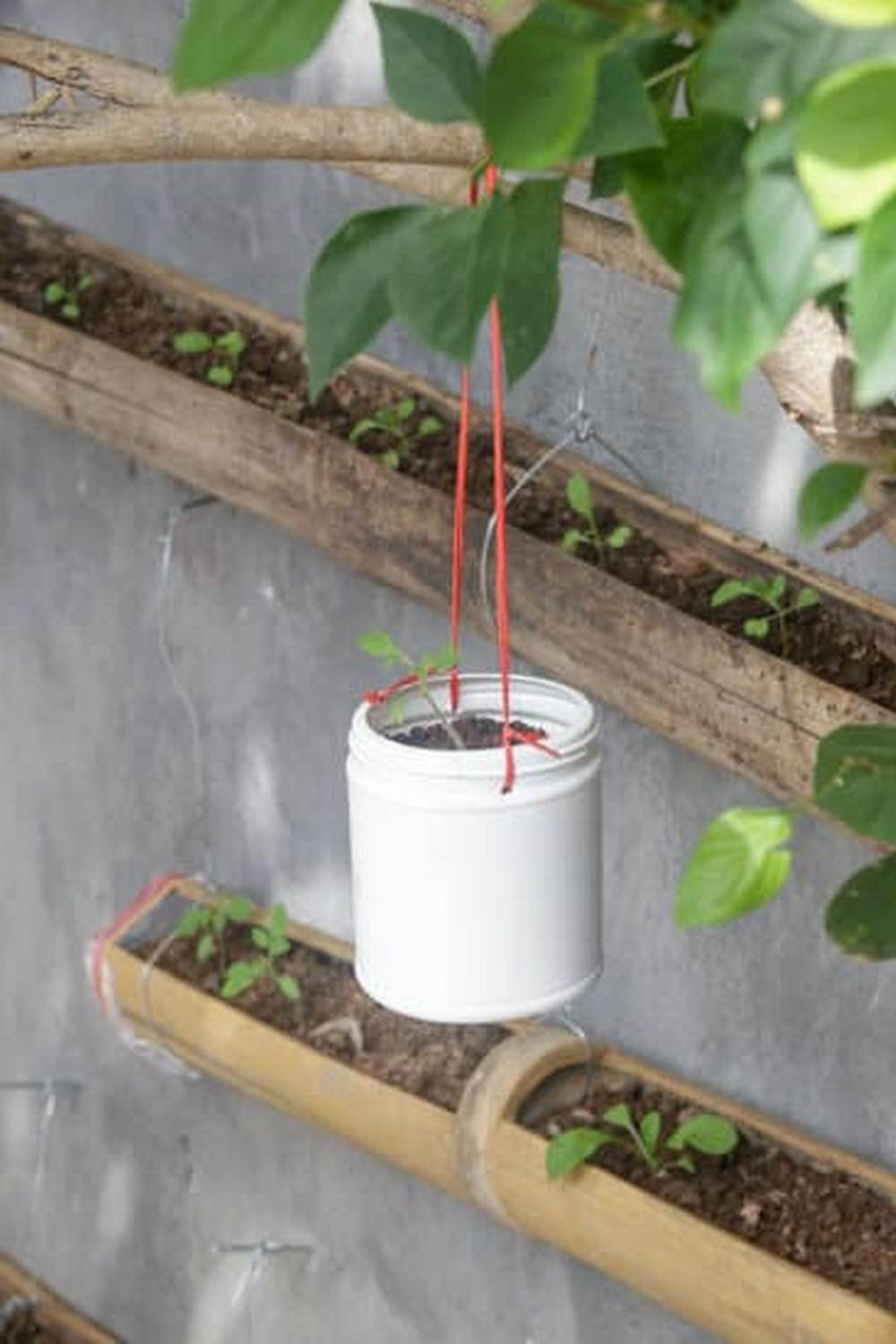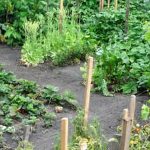Introduction
Vegetable gardening on a sloped yard can be a unique and rewarding experience. This type of garden presents its own range of challenges, but with the right knowledge and planning, you can successfully create a beautiful and bountiful vegetable garden in your hilly landscape. The following tips will help you get off to a great start as you begin working with your sloped garden.
First, it’s important to determine the nature and severity of your slope. Steep hillsides require special considerations when choosing plants, as some may not be able to tolerate the strain of being planted on an angle. Additionally, different crops will do better or worse depending on how much direct sunlight they receive at varying angles along the slope. If there appears to be an good amount of sun exposure across the different sections of your hillside, feel free to take advantage and plant crops that need more direct sunlight—such as tomatoes, peppers, eggplants and squash—in those spots.
Another challenge common to vegetable gardening on slopes is erosion prevention. Depending upon where you live, strong rainfall may cause soil from higher parts of the slope to wash away into lower areas or onto pathways bordering your garden beds. To prevent this from happening digging shallow channels perpendicular to the slope which should provide enough coverage for runoff water without causing further deterioration of soil around your plants. Additionally lay down organic mulch around your beds for extra protection against erosion and weed intrusion: both coir or shredded bark are suitable for this purpose.
Finally be aware that due to greater peaks and valleys on sloped surfaces yields sometimes vary dramatically between various sections of one garden bed – something known in horticulture as “top-soiling” – because nutrients tend to collect near the top most parts while leaving poorer soil behind in other areas So it’s important to remember that crop rotation techniques developed for traditional level gardens won’t necessarily work well automatically on steeper terrain; take slope into account when designing efficient rotation plans so that no part of your sloped yard is overworked or left uncared for over time.
Pros and Cons of Working with a Sloped Yard
Pros: A vegetable garden on a sloped yard can provide an excellent growing environment, since the slope helps with soil drainage and provides greater access to sunlight. The slope also makes it easier to tend to your garden since you can easily move between different levels of the garden without issue. Having a sloped yard also hides away any “ugly” aspects of gardening such as dirt and weeding as these activities are relegated downhill.
Cons: Although working with a sloped yard can have advantages, there are some disadvantages as well. Gardening on a slope is typically more difficult than gardening on level ground due to the added need for stabilizing hardscaping features that must be used in order to prevent root erosion caused by gravity. In addition, raising crops up the slope requires extra effort and equipment when compare to crops grown on horizontal surfaces. Also, gardening on an incline will require additional irrigation strategies in order for water to reach all areas of the space.
Overcoming Common Challenges of Working on an Incline
Creating a vegetable garden on a sloped yard can seem like a daunting task, as traditional gardening techniques do not always translate to such settings. Though there are certain problems associated with working on an incline, with the right approach, it is possible to create a successful vegetable garden that is both productive and aesthetically pleasing.
One common challenge of managing a sloped yard is avoiding soil erosion. To address this issue, terracing can be used to create flat or contoured areas along an inclined surface. This technique involves dividing the slope into tiers which can be further stabilized by level edging and retaining walls. Additionally, covering exposed hillsides with vegetation such as grasses, ground covers, mosses or flowering shrubs will help to reduce erosion by slowing the flow of water over the slope.
Standing water can also become a problem when growing vegetables in a sloped area due to improper drainage or excessive precipitation. To protect against flooding or pooling water in parts of the garden, it is important to ensure each planting section has appropriate pathways for excess moisture runoff. Building raised beds on higher sides of the hill will also provide additional protection from run-off and further injury caused by heavy rainfall or fluctuating temperatures.
The use of compost and fertilizers should also be carefully considered when managing a sloping property as nutrient runoff from these products could pollute local streams or waterways if not managed properly. The installation of diversion swales between planting zones may be beneficial; these channels provide an opportunity for subsurface water storage and are helpful in redirecting excess rainwater away from crops during heavy downpours. Improving soil fertility through gentle organic fertilization practices may also improve plant growth without negatively affecting surrounding ecosystems.
Finally, implementing drought-resistant plants into your sloped vegetable garden will provide greater stability for your landscape during periods of extreme heat and low rainfall. Selecting native species which are hardy enough to survive droughts without compromising yield performance can ultimately save resources while maximizing garden productivity year round.
Testing and Preparing the Soil
It is crucial to test and properly prepare the soil in order to have a successful vegetable garden on a sloped yard. The first step is to thoroughly remove any weeds from the area. Then, you should take a soil sample from the area and have it tested by a laboratory or at your local extension office, which can help determine what all needs to be added, such as fertilizer and lime. Once this is done, add enough organic matter like compost or manure to create healthy soil that contains plenty of nutrients for your plants. Otherwise, you will need to add small amounts of fertilizer throughout the growing season. Depending on how steep the slope is, you might also need to consider terraces with retaining walls in order to adjust the angle of your garden plot and prevent runoff that could wash away valuable topsoil over time. Additionally, adding mulch around plants can help keep soils moist and improve moisture retention. Furthermore, creating well-draining beds lined with spikes or raised embankments of soil can also help retain moisture in sandy soils while still allowing water to drain away quickly when necessary.
Vegetable Varieties for Sloped Yards
Growing vegetables on a sloped yard is possible, if you choose the right varieties. Generally, it’s recommended to focus on plants that don’t require staking, such as Camina di rucola (arugula), or ones that can be grown in hanging baskets such as cherry tomatoes. Carrots and radishes are also ideal for planting in raised beds on slopes, as they grow low to the ground and will have greater stability when planted in inclining soil. When it comes to vining plants, try cucumbers or squash with bush varieties being preferable. These can be trellised up a wall or fence that marks the slope’s edge without having to excavate large amounts of soil and create vast terraces. Additionally, you should also consider shrubby vegetables like peppers, which only need limited amounts of earthwork before beginning your terracing. Thoroughly watering these vegetables at least once week will help sustain them during droughts. Proper drainage and ample organic matter will give your plants the best chance of thriving on any terrain of your garden!
Dealing with Different Slope Contours
If your sloped yard is not perfectly even, you may need to use a series of terraces or raised beds to create an effective vegetable garden. Terraces help break up the slope and allow for more plants to fit in the space. Raised beds also provide extra drainage, which can be beneficial on a slope where water runs off quickly due to gravity. Consider building simple wooden barriers (like 2×4 boards) filled with soil along the slope line, arranging them in a step-like pattern. If needed, optimize your soil by adding compost or other organic material to make it more fertile. When planting, position plants so that they lean into the slope rather than away from it. You can also consider installing retaining walls and/or shade cloths or trellises for added protection against wind and erosion on your sloped yard’s vegetable garden. Planting trees, shrubs, and ground covers alongside your raised beds will offer additional support against soil erosion from rains. Deep rooted crops such as potatoes thrive well on slopes and can add crop rotation benefits to reduce potential pests if rotated through different parts of the terraces each season.
Making the Most of the Hillsides Pluses
A vegetable garden on a sloped yard presents unique opportunities and challenges. The primary advantage that comes with growing your vegetables in such terrain is the ability to make use of gravity to help water the plants. Planting raised beds is a great way to make sure the soil doesn’t wash away or become compacted when it rains. With strategic placement, these raised beds can be used for planting crops as well as for harvesting more efficiently.
In addition to using strategic placement of raised beds, terracing is another tool gardeners can use to successfully grow vegetables on sloped yards. This method involves using retaining walls to divide up the area into flat surfaces that can then be used for gardening. By creating several levels, you can add even more usable space while maintaining quick access to each bed. You can also prevent runoff by diverting water with drainage ditches in between levels so that rainwater goes where you want it and not oversaturating areas further downhill. Mulching heavily with organic matter will also help keep your soil from washing away within each terrace, which helps with nutrient retention and erosion control. Installing drip irrigation lines will save both water and time, allowing you to set up an automated watering system or simply turn on the hose periodically while working in the garden. With all these elements combined, a vegetable garden on a sloped yard has much potential for success!
What Types of Retaining Walls are Needed
Retaining walls are used to add structure to a sloped yard and create multiple levels for a vegetable garden. Depending on the size of the slope, different types of retaining walls may be required. For small slopes that are moderately steep, dry stacked stone (without mortar) or mortared flagstone walls can be used successfully. For large slopes or highly steep grades, gabion basket walls (filled with rock and soil held together by mesh) and reinforced concrete masonry block walls are often better choices because they offer greater stability.
Planning the Vegetable Garden Layout
When planning how to build a vegetable garden on a sloped yard, it is important to consider the surrounding environment and create design features that suit your needs. Firstly, you should determine whether or not any existing garden features can be incorporated into the design. This may include trees, landscaping elements and other structures. If so, you should use these to provide natural lines of sight between different parts of the garden, as well as providing shade in certain sections. In addition, if possible you should utilize contour planting when constructing beds – this is the practice of angling them to follow the contours of the slope in order to reduce erosion and maximize stormwater absorption. If there are excess irrigation systems available on your property then you can use them to water each row in order – however they will need to be adapted accordingly depending on the gradient of the land. Finally ,it is worth considering what type of crops you plan to grow- not all vegetables thrive equally on slopes – for instance root vegetables prefer level ground while tomatoes may require trellising or cages in order for them to get enough light. When finished with planing out your vegetable garden layout ,you must make sure all the required tools for soil preparation and maintenance are readily available during planting season.
Tips for Planting and Establishing on Slopes
When planting and establishing a vegetable garden on a sloped yard, there are several important considerations. The first step is to ensure that the area is suitable for a vegetable garden by assessing its soil type and drainage. If the soil is well-drained, compost should be added to improve its fertility and texture. A small terrace can be built on steeply-sloped yards to help break up the terrain and make it easier to create raised beds or walkways. It’s also helpful to create berms on the side of the slope in order to retain water and allow plants to get adequate moisture during dry spells. Depending on the amount of sun exposure, shade-tolerant crops should be considered if needed. For slopes prone to erosion, cover crops such as clover can be planted while adding organic materials such as hay between rows helps minimize soil loss due to wind or rain. Straw mulch should also be used around plants to reduce evaporation and promote healthy root growth. Lastly, setting up drip irrigation or sprinklers may be necessary for growing food successfully on sloped land; this helps maintain consistent moisture levels despite fluctuations in rain and temperature changes.
Getting Ready to Plant
1. Select the best area for growing vegetables: Vegetables need sun and slightly acidic soil to grow well, so it is important to select an area that will provide those two factors. Consider the amount of sunlight your plants will need and how much space you have to work with. When selecting a spot in your yard, make sure to avoid any areas that might contain pollutants or may be prone to erosion.
2. Test your soil pH: Soil that has a pH balance between 6.0-6.8 is ideal for growing most vegetable crops. As such, it is important to measure the pH level of your soil before planting anything. This can be done quickly and easily with an at-home test kit or by bringing samples of your soil to a local testing center.
3. Amend the soil as needed: After you have measured the pH levels of your soil, you may need to add nutrients or other amendments (such as manure or compost) in order to improve its fertility and drainage properties. Always research what amendments are recommended for the types of vegetables that you want to grow and how much should be added for optimal results.
4. Install a terrace system if needed: If your garden is on an especially steep slope, consider installing a terrace system so that the soil does not erode away and wash away any nutrients from beneath your plants’ roots over time. The terraces should be arranged into several levels (each about one foot tall) so that water moves slowly down each garden tier and allows more time for drainage instead than would otherwise occur on a flat surface.
Conclusion
When it is all finished, maintaining a vegetable garden on a sloped yard can be an enjoyable, rewarding experience. People who take the plunge and build a sloped garden are often surprised at how much produce their gardens can yield, as well as the amount of effort that goes into making sure the soil remains healthy and adequately nutritious to support thriving plants. The layout of the plants in a sloped garden enables easy access and water flow to reach all parts of the garden. Additionally, planting vegetables together in such a way can promote better pest management because they naturally keep away or fend off predators or unwanted insects. And that’s not even mentioning the beautiful aesthetic of varying heights and colors that many flower and vegetable gardens provide! With careful planning and consistent watering, harvesting fresh veggies at the end of each season makes for an incredibly satisfying experience.

If you’re looking to get into vegetable gardening, or are just looking for some tips on how to make your current garden better, then you’ve come to the right place! My name is Ethel and I have been gardening for years. In this blog, I’m going to share with you some of my best tips on how to create a successful vegetable garden.





